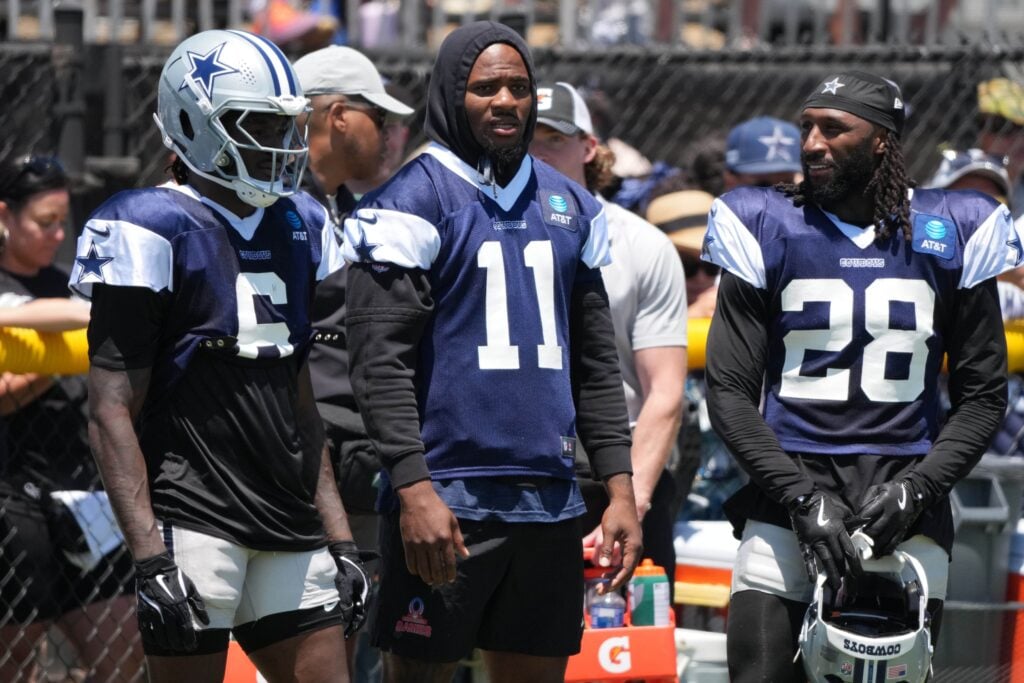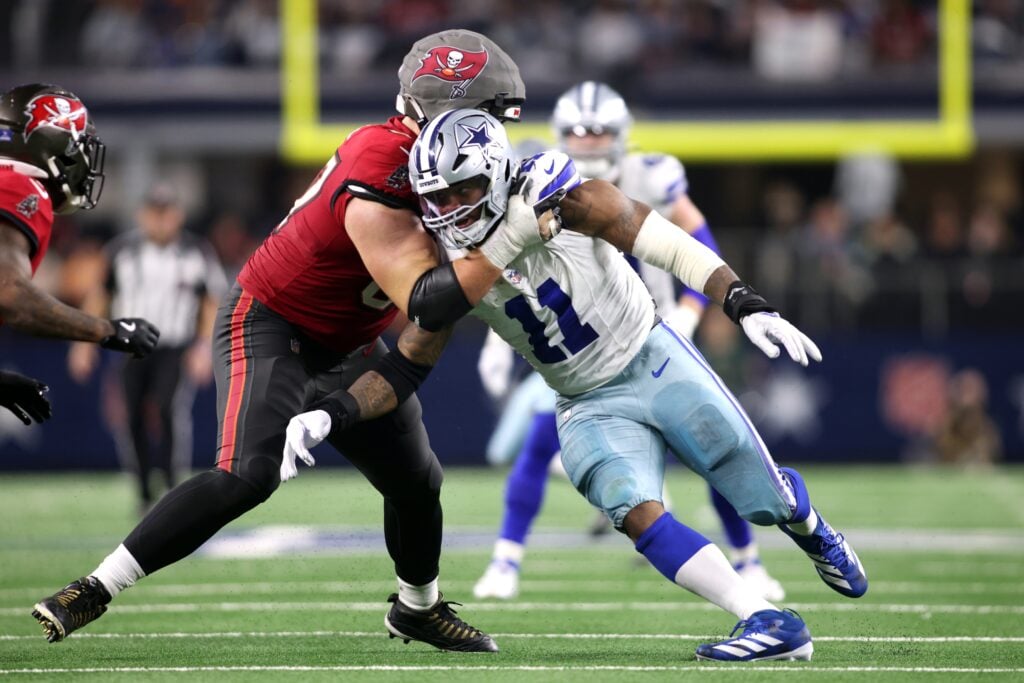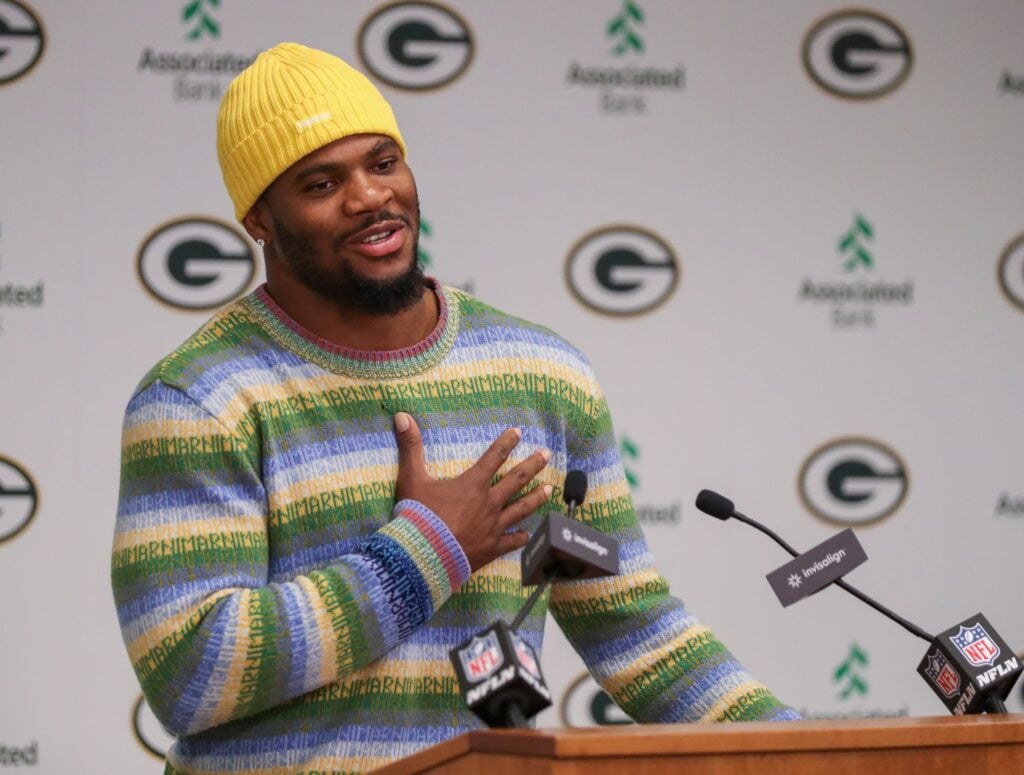In the aftermath of the Micah Parsons trade, Cowboys fans are still wondering what the heck just happened. An ESPN report by Jeremy Fowler and Don Van Natta Jr. sheds more light on the fractured relationship. The Dallas Cowboys, from Jerry Jones on down, decided they couldn’t live with Parsons the person, no matter how dominant Parsons the player was.
From meetings gone sideways to a public battle of he-said, he-said, the reporting makes it clear. Dallas loved the player, but not the personality. And that’s why Parsons is no longer a Cowboy.
Dallas Cowboys On The Micah Parsons Trade: “We Loved The Player, Not The Person”

The March Meeting Was The Beginning Of The End
If there’s a flashpoint in this whole saga, it’s the March meeting between Jerry Jones and Micah Parsons. The ESPN report zeroed in on this moment as the day things began to unravel.
Cowboys: Micah Asked For The Meeting
It had previously been reported that Jones called Parsons in for a meeting to discuss his leadership role within the team. At some point during that meeting, the conversation drifted towards contract details, and that version of events has largely gone unchallenged. Until now.
According to a Cowboys team source, Parsons was the one who asked for the meeting, explicitly to hammer out his long-awaited extension. Jones went into that meeting expecting something familiar: negotiating directly with the player. They reportedly discussed—and agreed to—guarantees and overall money; the kind of numbers that would reset the market for edge rushers. They spoke for more than three hours, and Jerry believed they had a deal.

Parsons’ Camp: It Was About Leadership
Parsons’ camp tells it differently, standing by what had been initially reported. Jerry was the one who called Parsons in, and the subject was supposed to be leadership. Parsons’ side acknowledged that talks veered towards Micah’s contract situation, but insists that he never agreed to the final terms. Parsons consistently reiterated that details needed to be finalized through his agent, David Mulugheta.
To Parsons’ camp, this was a leadership conversation. Nothing more. Parsons’ side also stresses that Jerry’s version leaves out a key detail: Micah consistently deferred to Mulugheta when the conversation got into specifics. In their view, Jerry trying to frame the discussion as a handshake agreement was just another example of the Cowboys’ “hotbox” tactics—a practice whereby the team conducts contract talks without the players’ agent present.
And here’s where the power dynamic matters. Parsons was only 25 at the time, sitting alone across from the most powerful person in football, who also happens to be his boss. Jones has been doing these negotiations for decades. Even if Parsons held his own, the setup itself feels almost predatory. It put a young star in a room where the leverage was always tilted against him.
The Twist
Later that same day, the team source says that Parsons called Stephen Jones and tried to ‘sweeten the pot’—asking for more guaranteed money and a few extra tweaks. The Joneses claim they accepted these sweetened terms and believed the deal was essentially done. But once Jerry passed the details along to Mulugheta, he pushed back. The Cowboys say Mulugheta told them those terms were just the floor, and that negotiations would now start.
Parsons’ side maintains they never saw the final structure the Joneses were talking about.
That’s the chasm this entire drama was built on: Jerry believed he had a handshake deal, while Parsons and his agent insist nothing was final. What Jones saw as a done deal, Parsons’ camp saw as just an informal discussion. From that moment, the relationship was irreparably frayed. And the road to the Micah Parsons Cowboys trade had officially begun.
Parsons’ Perceived Spiral At Camp
In an attempt to show good faith by being present, Parsons shot himself in the foot with his antics.
By the time training camp rolled around, the tension between Parsons and the Cowboys was high. ESPN’s reporting highlights a number of behaviors that the Cowboys found disconcerting and hard for those in the building to ignore.
There was the day he showed up without shoes on. A day when he didn’t wear his practice jersey on the field. Another where, he wore it around his neck. Then came the strangest stretch all at once during the Cowboys’ preseason finale: Parsons strolling to the locker room, eating nachos, acknowledging a Falcons fan who asked about him being traded. Then the most infamous moment of all—the viral video of Parsons splayed out on a trainer’s table on the sideline, looking completely checked out. Oh, and he was also the only Cowboys player to go the entire preseason without ever wearing his jersey on the sideline.
America’s Team. A real-life reality television show.
Within the team, his antics were described as “deflating.” Coaches and players questioned whether his approach was helping or hurting, even as others noted that Parsons kept himself in shape with his own personal two-a-days. Regardless, it created a divide. What Parsons likely saw as a low-stakes protest against Jerry’s handling of his contract came off inside the building as petulance and immaturity.
Nothing described above defined Parsons as a player, but they started to define how people in the Cowboys organization viewed him as a person. And that’s where the cracks widened, deepening the divide that ultimately led to the Micah Parsons Cowboys trade.
The Cowboys “Loved The Player, But Not The Person”
If there’s a hammer in this piece, this is it. The Cowboys team source told ESPN that multiple staffers “loved the player, but not the person.” It’s the clearest window yet into why Dallas pulled the trigger on the most shocking trade in franchise history.
On the field, Parsons was undeniable. His 52.5 sacks in his first four years outpace nearly every great who came before him. By expected points added per play, Dallas was the best defense in football with Parsons on the field—and the worst when he wasn’t. That stat speaks for itself.
But the Cowboys looked at more than just sacks, pressure rate, and quarterback hits. Run defense was a major factor in their decision to trade Parsons. ESPN notes that Parsons ranked 68th among edge rushers in stop rate against the run and 81st in yards per run stop. Numbers the front office believed made him a liability on anything but obvious passing downs.
Coaches and even some teammates questioned his preparation and leadership style. Some saw a player with drive and work ethic, while others saw a player who was inconsistent in the weight room or too outspoken on his podcast. To Jerry and the Cowboys, Parsons just didn’t fit the profile of a cornerstone player they wanted to commit north of $40 million per year to.
So Jerry pulled the trigger. The Cowboys moved on from a 26-year-old superstar entering his prime not because of talent or production, but because of fit. Dallas could live with Parsons the player, just not Parsons the person.

Tork Mason/USA TODAY NETWORK-Wisconsin
Micah Parsons Cowboys Trade: Do We Actually Know What Happened Now?
So, back to the original question: What the heck just happened? After ESPN’s report, we have a clearer picture. We might not like it—each side has their own version of events—but it answers some questions that had been lingering. The Cowboys didn’t just trade Parsons because of money. Dallas traded him because he just wasn’t their kind of guy—the drama leading up to his trade request showed just how far things had unraveled.
Money wasn’t irrelevant, though. Jones is already paying Dak Prescott the highest annual salary in football, and CeeDee Lamb is near the top of the wide receiver market. Adding another player north of $40 million would have made Dallas the most top-heavy cap situation in the NFL. Still, that only explains part of the story. The rest came down to Jerry and the Cowboys deciding they couldn’t live with Parsons’ behavior.
Now Parsons is in Green Bay, but even that chapter begins with uncertainty. He was a non-participant during training camp and preseason with a back injury that many around Dallas believed was more a negotiating tactic than anything health-related. But recent reports say the injury is real, suggesting Parsons may need an injection in order to be able to play Week 1. Parsons’ back will be something to monitor as the season progresses.
And then comes the real drama. In Week 4, Parsons will return to AT&T Stadium as a Packer for a primetime showdown on Sunday Night Football. Cowboys fans will have their first chance to see him in another uniform. And their own chance to decide whether the front office made the right call, though we won’t know that answer for years to come.
Here’s what we do know: the Micah Parsons trade is peak Dallas Cowboys theater. It will either be remembered as bold and business-savvy or as one of the biggest mistakes in franchise history. Either way, one truth is clear:
The Cowboys could live with Parsons the player, but not Parsons the person.
Main Photo: [] – Imagn Images
The post The Dallas Cowboys Didn’t Like Micah Parsons The Person appeared first on Last Word on Pro Football.